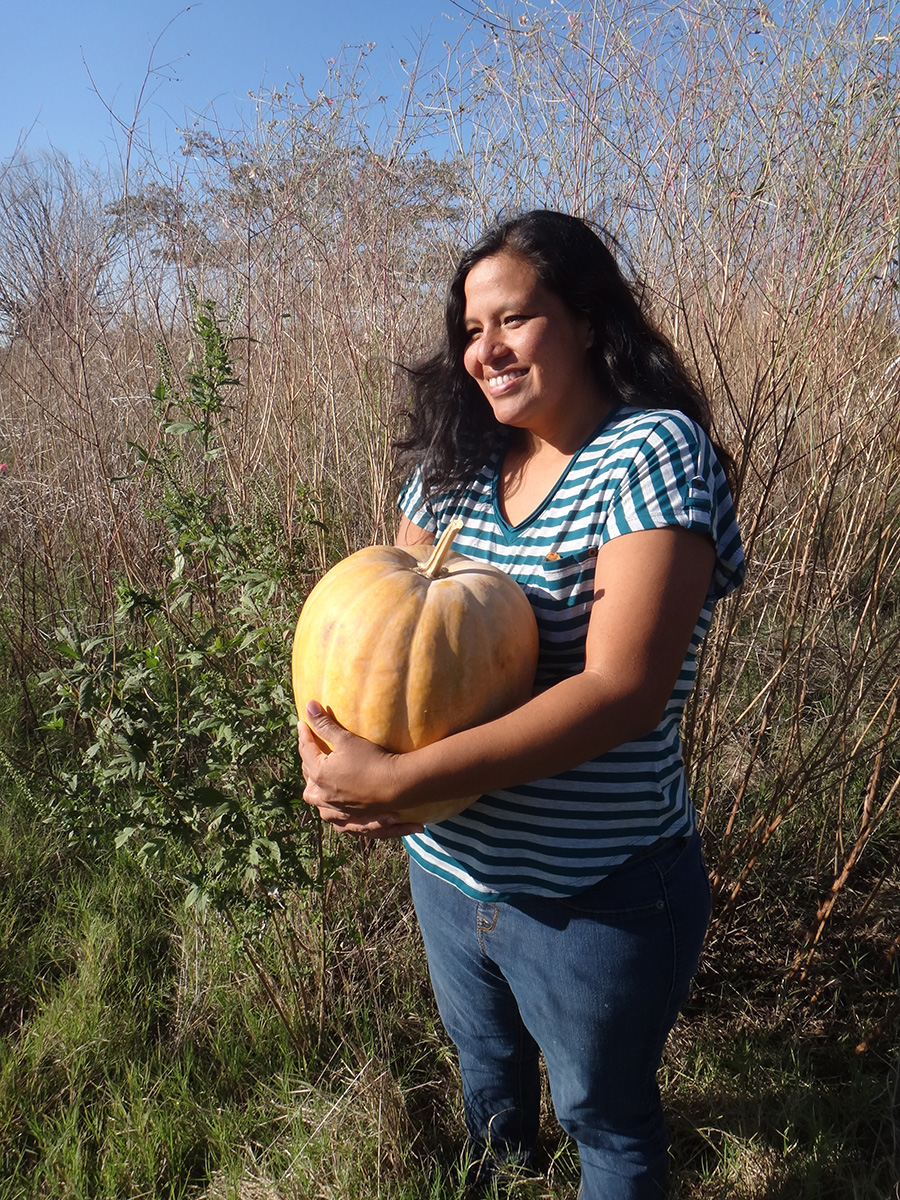Growing hope
Thursday, November 2, 2017

For years, Ian Thompson and his wife, Amy, have raised a garden featuring Choctaw heirloom or heritage seeds – seeds of older varieties of crops that are no longer cultivated on a wide scale.
They have shared the seeds – and knowledge – back and forth with other interested Choctaw growers.
Now, in partnership with Oklahoma State University researchers and the OSU Center for Sovereign Nations, a broad initiative centered around the importance of revitalizing heirloom Native American crops is gaining momentum to the ultimate benefit of all Oklahomans.
In fact, as far as Thompson, tribal historic preservation officer for the Choctaw Nation of Oklahoma, is concerned, the Preserving Choctaw Culture by Growing Hope project is taking his collaborative work to an entirely different level.
“I think people are excited because this isn’t about history, but about reclaiming parts of a unique Choctaw heritage that can help our people live healthier, more fulfilling lives today,” he said.
The project is part of a larger effort to help tribal nations in Oklahoma develop their own food systems around three general purposes – cultural, nutritional and commercialization.
Many traditional crops are used in culturally significant powwows, festivals and ceremonies, while following a diet rich in traditional foods has been shown as healthy and effective in addressing diabetes, obesity and other conditions prevalent within Native American populations.
“The idea is focused on local foods, but with the understanding that in Oklahoma we’re unique because of all the tribal nations here and that local foods are especially important to them,” said Joshua Ringer, visiting assistant professor in OSU’s Department of Horticulture and Landscape Architecture. “What OSU is offering is help providing research into these traditional crops and how they can be used for whatever purposes tribal nations prefer.”

Thompson actually grew up with a few Choctaw traditional foods and over the last 10 years, he has been collecting knowledge and wisdom from elders and historical sources in an effort to weave together the story of the Indigenous Choctaw foodway.
In the coming year, the Choctaw Nation plans to publish a book containing his findings.
“I think the community has a strong interest in revitalizing traditional food because it’s about reclaiming a part of who we are,” Thompson said, emphasizing heritage seeds have never existed in isolation.
Instead, they are connected with spirituality, land management techniques, traditional arts like river cane basketry and clay pottery, Choctaw language and community cooperation.
“As we strengthen our traditional foods, we ultimately strengthen a broader part of who we are and that has a lot of meaning,” he said.
A number of crops are being sown through this initiative, including varieties of Choctaw hominy corn, flour corn, beans, sweet potato squash, lamb’s quarter, huazontle, field peas and tobacco.
The seeds’ sources vary. Some come from Choctaw families like Thompson’s, who have preserved specific varieties by growing them for generations. Other seeds were long ago shared by the Choctaw community with others and have been cultivated as heirloom seeds in the Southeast for years.
“We’re always hopeful that other Choctaw heritage seeds are going to come to light,” Thompson said. “Just last month, a family shared a precious gift of Choctaw bean seeds with the program. As far as we know, there are only 10 of those seeds left in the world. Choctaw farmers have been growing beans for 800 years, and if those seeds were to be lost, the tribe and the world would lose out on those 800 years of selection work.”
The focus on heirloom crops began with a simple conversation between Justin Quetone Moss, OSU associate professor and Huffine endowed professor of turfgrass science, and Elizabeth Payne, director of the OSU Center for Sovereign Nations, shortly after the center was established in 2015.
“Early on, I visited with Elizabeth. I’m a member of a Native American tribe in Oklahoma, so I approached her and said I’m happy to hear what you’re doing and happy to help out,” said Moss, who also is a state OSU Cooperative Extension specialist for urban landscape, water and environmental issues.
Eventually, Ringer and Lynn Brandenberger, OSU horticulture and landscape architecture professor, vegetables, were drawn into discussions about ways to engage the center’s partnering nations.
“They wanted to understand more about tribal nations’ needs regarding preservation of traditional heirloom seeds and incorporation of these varieties into Native American food systems,” Payne said.
After a series of strategy meetings, the project team partnered with the Choctaw Nation for a one-day Native American seed processing, cultural food and nutrition event in October 2015.
The event drew representatives from several tribal nations as well as the Noble Foundation. In addition to hands-on seed processing and cooking demonstrations, participants discussed the cultural and nutritional aspects of heirloom varieties before closing the day with roundtable discussions on next steps.
Since then, the effort has expanded along different, but related tracks focusing on local foods and heirloom seeds thanks, in part, to multiple long-term grants.
For instance, an Oklahoma Department of Agriculture, Food and Forestry grant has allowed the study of water use efficiency using traditional Native American legumes.
Meanwhile, through a four-year U.S. Department of Agriculture Community Food Promotion grant OSU is partnering with the Choctaw Nation to study the cultivation, production, nutritional value and commercialization of traditional crops.
This grant also is funding the construction of a greenhouse on the grounds of the Choctaw Nation capitol at Tushkahoma in Pushmataha County. The structure will be used to grow heirloom seeds in a protected environment so there will be a stable supply to provide to growers.
Another USDA grant administered by the Oklahoma County OSU Extension office and the Choctaw Nation is helping to draw youth into agriculture, as well as train producers on the unique production requirements of heirloom crops and how to market them.
As the project moves forward, Moss sees clear benefits for the Choctaw Nation and other tribal nations around the state, as well as for all Oklahomans.
“Anyone can be in horticulture. There’s no criteria,” he said. “Any small producers or even just average homeowners and backyard gardeners can benefit from this by learning about neat heirloom varieties, how to produce them, take care of them, how to get seed from them and how to keep the genetics going over time.”
Meanwhile, Thompson has an eye toward an ultimate vision for this project.
“For the next few years, the Choctaw Nation will be assisting families who are interested in revitalizing part of the foodway. That involves sharing information two ways, providing resources and building infrastructure,” he said. “The ultimate vision is that one day facilitation won’t be needed anymore because members of the community will have revitalized these foods as a living, self-supporting entity.”
